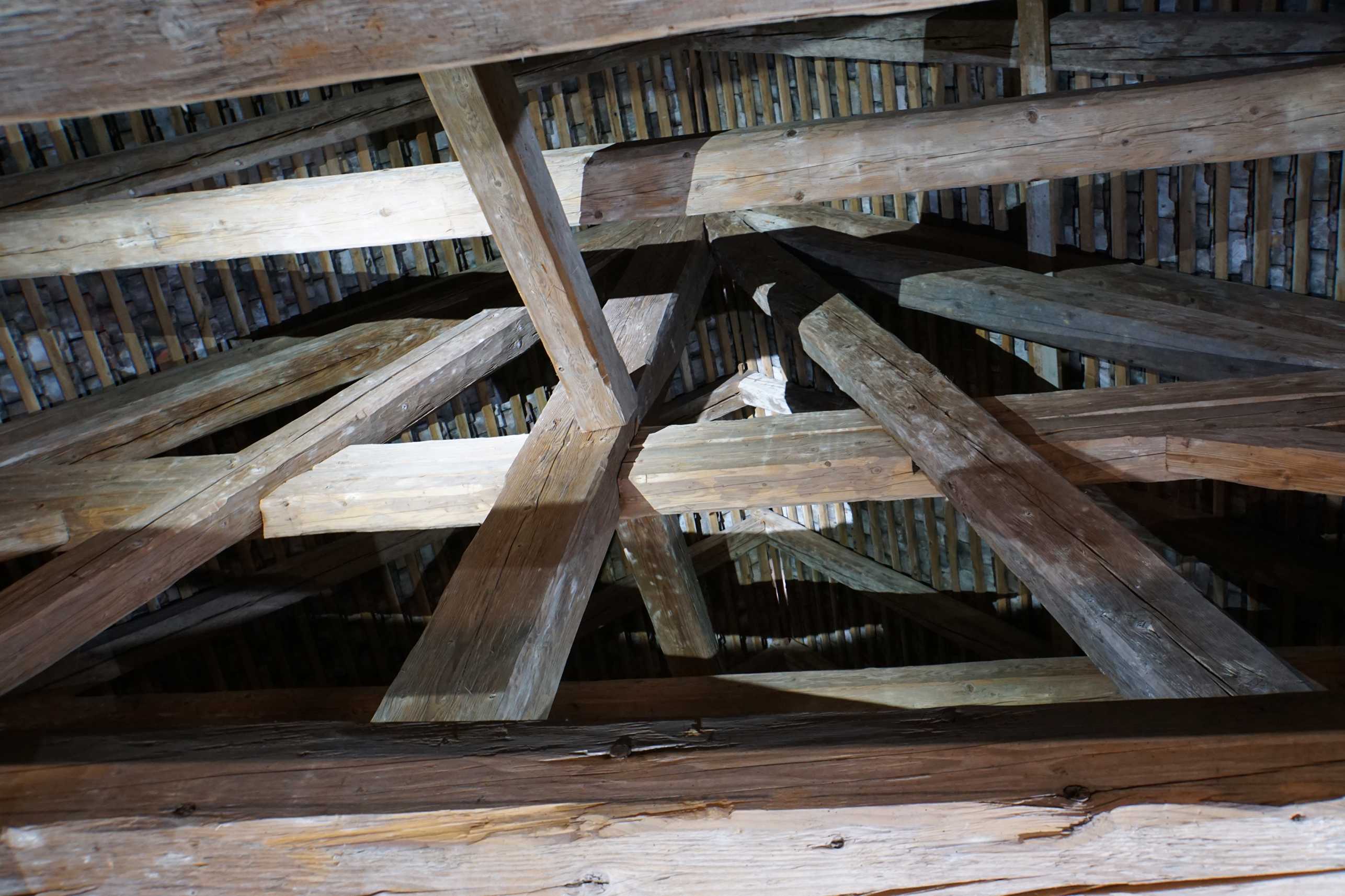Focus works

Advanced theses can be started at the Chair of Building Research and Construction History independently of the semester cycle. The completed theses are presented once per semester in a small setting in the first week of the semester (September/February) and are also assessed.
The subject of the in-depth work is typically the investigation of a historical building structure. This must be measured on site and documented photographically. The object is described in an explanatory report and the findings on construction, building history, conversion measures and state of preservation are interpreted as far as possible. In some cases, limited archival studies are also necessary to complement the on-site investigations.
In-depth work should preferably be carried out on objects proposed by the professorship. In 2025-28, in coordination with the Reformed Church in the Canton of Zurich, the roofs of historic churches in the canton (pre-1900) will be comprehensively recorded and examined. There is a detailed dossier for this in-depth work with information on the process, the procedure and the desired delivery.
Requirements and information
If you prefer to work on a topic that does not fall within our suggested subject area, this is also possible in principle. In this case, you must present the object to be examined in a short dossier (1-2 A4 pages). The prepared dossier should be sent by e-mail to the contact person (see below). You will then be assigned a tutor with whom you can clarify everything else.
- Object selection: The object of your choice must be of sufficient interest in terms of construction history or architectural history (as a rule, no measurements of the “grandparents' cottage” or preliminary work on current conversion projects by the architectural firm). Typical objects are supporting structures in wood, stone and iron (roof structures, riding halls, bridges, etc.) as well as historical residential and utility buildings (barns, goods sheds, farmhouses, etc.). The object must still have historical building fabric (e.g. the structure must not have been completely replaced).
- Important information and photos: The dossier should contain the most important information such as year of construction, architect, history, etc. as well as some impressions/photos
- Accessibility: The work consists to a large extent of the on-site analysis of a historical building. The object must also be accessible for the supervising tutor (max. 2 hours from Zurich main station). The accessibility of the objects must be clarified in advance with the responsible authorities, the monument preservation authorities or the owners. No in-depth work can be carried out without access to the object. The tutor must be able to visit the property with you. You must make organizational arrangements for this visit.
- Question: Why should the object be examined? Specify which aspect of the object interests you, especially in the case of larger objects. How should you proceed? What should be the result (room book, measurements, drawing) of the in-depth study? At the end, a scientific report must be submitted in a technically correct form (no purely graphic work without accompanying text).
Assignment and execution
After you have been assigned a tutor, the exact task and the scope of the in-depth work can be discussed. The best way to do this is to meet on site and inspect the object to be examined together. Once the task and scope have been determined, the work can begin. It must not take longer than two semesters to complete the tasks and write the dissertation. If the thesis has not been submitted by then, it will be terminated.
Submissions and final presentation
The exact submissions are to be discussed and defined with the tutor. Each submission also includes a written report prepared according to the requirements of the professorship (see below). The report and associated plans must be submitted in printed form to the Institute (HIT H 43); all documents, data, plans, archive materials and photos must also be submitted digitally. The data should be provided in the most common file formats (report as .pdf, plans as .dwg and .pdf, models as .3dm, scans and photos as .jpg or .png, etc.).
The proof of performance also includes a short presentation (approx. 5-10 min) of the in-depth work, which usually takes place twice a year in the first week of the semester (February/September). You will be informed of the exact dates by e-mail. When you submit your thesis, you also submit a poster that presents the subject of your research and lists the key points of your thesis (author, topic of the thesis, semester of submission).
We reserve all rights to use the submitted documents in lectures, lecture notes and publications, stating the authorship.
Formal guidelines and standards
The specifications of the Holzer Chair apply to the written paper:
→ Leaflet on scientific writing (available only in German)
→ Download Guide - Church Roofs of the Canton of Zurich – Focus works (PDF, 578 KB)
→ Download ETH Zurich Declaration of Originality (PDF, 183 KB)
Contact person for focus works
Current and completed projects
For an overview of current and completed projects, please change to the German version of the website.